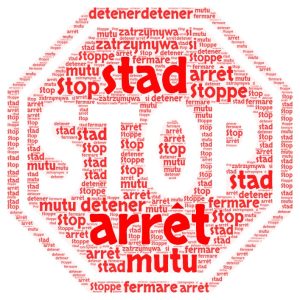3.7 Navigating Domestic Violence & Intimate Partner Violence (IPV)

Windsor praised for declaring intimate partner violence a local ‘epidemic’ – July 17, 2023 (Windsor Star)
Local organizations that help women fleeing abusive relationships are praising city council’s unanimous decision to declare intimate partner violence an epidemic in Windsor (1)
ABSTRACT
This chapter explores domestic violence (IPV – Intimate Partner Violence), its prevalence, impacts, and risk factors. It describes two major paradigms that inform the research and practice of domestic violence responses, and delineates between systematic and situational violence. Key interventions and models of counselling effective in working with victims-survivors and perpetrators are described.
Learning Objectives
- Identify definitions and impacts of domestic violence.
- Analyze the gendered feminist model and family violence model.
- Identify general principles for screening, assessment, and intervention with domestic violence perpetrators and victims-survivors.
- Recognize the importance of supervision and self-care.
INTRODUCTION
Public awareness of domestic and family violence has increased in contemporary society, with a regular stream of news stories reporting murders of young women and mothers by partners with whom they were currently or formerly in committed relationships. What was historically viewed as a private family affair has been made visible as a criminal and public health issue. Counsellors will see clients who come specifically for help from domestic and family violence situations, may have it as a background issue, or alternatively the counsellor may work in specialist programs specifically focussed on working with perpetrators and/or survivors of family violence.
This chapter will provide a brief and basic overview of what is an extensive and nuanced topic. It will provide introductory knowledge in key areas required to identify, support, and refer clients, though developing more expertise is strongly recommended. The chapter reflects the historical and contemporary gendered discourses that emphasize women’s vulnerability and introduces gender-inclusive perspectives and language to support appropriate assessment and intervention practices. This chapter will address intimate partner abuse and violence.

DEFINITIONS
There are several key definitions that are used when referring to violence and intimidation that occurs within families and intimate relationships. Earlier terms were specific to married women, such as wife abuse and wife beating, however current terminology is more inclusive. Domestic abuse (DA) is the term given for a range of abusive behaviours without physical violence (2) and is commonly used in literature from the United States. Domestic violence (DV), partner violence, and intimate partner violence (IPV) are often used interchangeably to refer to violence and intimidation that occurs by partners and former partners, while the term family violence includes adolescent to parent abuse, elder abuse and child abuse and neglect. Family violence may be preferred over domestic violence by Indigenous peoples, due to their wider and more connected kinship relationships (3). Victims and survivors are both used as identifiers of those who have been abused, however, the former may denote passive, innocent helplessness, while the latter is usually preferred due to the inferred agency in surviving despite abuse. In this chapter, victim-survivor will be used. Perpetrator has historically been the term for those who use abuse, however, is increasingly superseded by Person Using Family Violence (PUFV) to reduce stigmatization, which can be a barrier to help seeking. A list of contemporary terminology for family, domestic, and sexual violence can be found at the Australian Institute of Health and Welfare [AIHW] (4), Fact sheet: Intimate partner violence (terminology) Government of Canada (5) or RCMP – Intimate partner violence and abuse(6).
WHAT IS DOMESTIC VIOLENCE?

DV is interpersonal maltreatment that may psychologically and/or physically harm one’s intimate partner (or ex-partner) and potentially others (such as children and pets). This includes acts and threats of acts, and negligence. It is a violation of the emotional contract based on an implicit or explicit commitment to each other’s welfare, and a demonstration of a disrespect for the other’s rights and boundaries. A common belief about domestic violence is a loss of control, and that persons using violence need anger management, or that victims/survivors provoke the aggression. However, it is most commonly understood as exerting power and control (4)(8).
A significant number of people have experienced relationship aggression. In Australia, one in six women and one in sixteen men reportedly experienced physical and/or sexual violence from a current or former partner since 15 years of age (Australian Bureau of Statistics (9). The same survey showed one in six men and one in four women reported receiving emotional abuse from a current or former partner since age 15. In relation to partner violence over a twelve-month period in 2016, 1.5% of women, and .8% of men experienced partner violence (9). While at a population level these percentages may seem relatively small, counsellors will see higher percentages in their practice due to the associated issues they treat such as depression, anxiety and trauma, and relationship difficulties.
FORMS OF DOMESTIC VIOLENCE
There are many behaviours that fall under the umbrella of violence. One of the common misconceptions with clients is that unless physical violence is involved, relationship aggression cannot be called domestic violence (10). However, physical assaults are just one of several forms of domestic violence.
Counsellors need to be aware of the various ways relationship aggression is enacted. Below is a selection of various forms of violence and abuse:
- Physical violence: assault, hitting, pushing, choking, burning, hurting pets, or using weapons
- Sexual violence: non-consensual sexual contact including unwanted sex acts and rape
- Financial abuse: withholding access to finances, controlling all financial decisions, providing insufficient funds for essentials
- Psychological and emotional abuse: intimidation, controlling behaviour, making threats, belittling, yelling, verbally abusing loved ones or pets, gaslighting, emotional blackmail, blaming, stalking, threatening suicide
- Social abuse: isolating from family, friends, and other social supports, publicly humiliating
- Cyber abuse: online stalking, revenge porn, bugging devices with tracking software
- Spiritual abuse: denial of religious freedom, use of religious beliefs or practices to control behaviour or movement.
One of the most widely known gender-based graphical representations of clusters of abusive behaviour is the Power and Control Wheel (11). This wagon-wheel design centralizes power and control as the primary motivation for men who use violence, from which patterns of behaviour emanate. The conceptual model was based on information provided in focus groups of female survivors, though has also been adapted for the 2SLGBTQI+ community (12). The model is used to make transparent to batterers the dynamics and tactics of abusive men. An additional diagram named the Equality Wheel was added later to depict what behaviours battering men should replace the abusive behaviours with Domestic Abuse Intervention Programs (13). Counsellors who suspect DV may show clients these two wheels as a means of assessment and of awareness-raising.
TYPOLOGIES OF DOMESTIC VIOLENCE
Johnson (14) suggested that not all DV is motivated by control, but that there were four different identifiable patterns. The first is intimate terrorism (earlier was termed patriarchal terrorism) (14) (15). This is where one partner systematically and comprehensively controls the other, irrespective of the other partner’s attempts to appease and placate the violent partner. The second is violent resistance, whereby the victim of intimate terrorism fights back using violence. It may be defensive, payback, or an attempt to escape (e.g., a type of defensive homicide). The third form of DV is called situational couple violence (or common couple violence). This type of violence is not indicative of a pattern of control like intimate terrorism. Rather, it is due to situational stressors, varying motivations, and conflict management deficits. It can be used by one or both partners, may be one off or chronic, may be relatively minor or lethal. The fourth is mutual violent control. This is the rarest pattern whereby both partners systematically seek to control the other partner.

These four different types of domestic violence are important to understand in assessing risk and considering interventions. Counsellors need to know that intimate terrorists may attempt to manipulate the counsellor to collude with them against the victim. While the dominant understanding defers to believe women and hold suspicion towards males claiming victimization, counsellors need to be mindful women can also be intimate terrorists (16). Counsellors also need to determine whether the dynamics are control-based or conflict-based, and whether the power in the relationship is relatively equal or unequal. Clients who use conflict-based, stress triggered DV may benefit from teaching emotion regulation and conflict management strategies to the individual/s perpetrating the abusive reactions. Control-based DV may require more mandated, community, and legal interventions to protect those at risk, and aim to restrain offenders via legal means (e.g., protection orders).
IMPACTS OF DOMESTIC VIOLENCE
Clients affected by DV can present with a range of symptoms and issues, including psychological, physical, social, and financial. Presenting issues in counselling can include low self-esteem, shame, self-reproach, depression, anxiety, relationship distress, trauma symptoms, suicidal thoughts, eating problems, substance abuse, and somatic symptoms (17)(18)(19). In addition, physical injuries may also be visible or revealed by the client to the counsellor. As a psychological trauma, DV negatively impacts one’s ability to develop and maintain healthy boundaries in interpersonal relationships. This can manifest in the counselling relationship as being overly reliant or dependent on the counsellor. Guilt, shame, and avoidance are proponents of trauma symptomatology that cause victim-survivors to conceal, minimize, or deny DV (20). Besides the impacts already listed, women experiencing DV have higher rates of unplanned pregnancies (21). Babies of women experiencing DV are more likely to be premature, smaller, and have a lower birthweight (22). Clients in DV situations may be more socially isolated, and have limited social supports available to them, often due to their partner controlling their movements and attempting to seclude them. They often have less access to financial resources, which makes escaping harder without the support of social mechanisms to assist.

Children who witness DV have similar symptoms as those directly abused (23). They also experience similar symptoms to adults’ direct experiences of DA, including lowered self-esteem, depression, anxiety, and trauma symptoms (23). In addition, DV has been associated with elevated risks of aggression for both male and female adolescents (24) and increased the risk for both sexes for referrals to juvenile courts, with girls being at higher risk of DV offences and boys for violence against non-family members (25). There is also a substantial co-occurrence with child abuse in DV homes (26), hence counsellors need to also assess for child abuse and neglect.
Arguably, the most significant impact is death, potentially the homicide of the partner, children, and at times, includes the suicide of the perpetrator. The risk of being murdered is higher for women who were abused in pregnancy, who initiate or complete separation, or have their own substance abuse issues. For males who perpetrate intimate partner violence, higher risk factors for committing intimate partner homicide are that they are younger, are unemployed, have lower levels of education, are controlling, show jealousy, have anger problems, have used non-fatal strangulation, have forcibly used sex, have threatened harm, have addiction and mental health issues, and/or have access to firearms (27)(28)(29). Counsellors need to ensure they do not lose awareness of this potentiality when assessing risks. DV is potentially lethal, and counsellors need to maintain awareness of this risk. The take-home message in exploring the impacts of DV, is that whether experienced directly or witnessed, DV is harmful to both adults and children, and that due to these risks and its prevalence, it is important for all counsellors to be competent in identifying and addressing DV.
Why domestic violence victims don’t leave | Leslie Morgan Steiner. By Ted Channel. Leslie Morgan Steiner was in “crazy love” — that is, madly in love with a man who routinely abused her and threatened her life. Steiner tells the dark story of her relationship, correcting misconceptions many people hold about victims of domestic violence, and explaining how we can all help break the silence. (Filmed at TEDxRainier.)(30)
The Domestic Violence Treatment Option (DVTO) Court. is an alternative court in the Northwest Territories (NWT) for people who have been charged with violence against their partner and/or spouse. DVTO Court allows people to accept responsibility for their behaviour and receive support and counselling to address emotional and psychological causes of domestic violence. The Department of Justice, the Royal Canadian Mounted Police (RCMP), courts and community programs work together to plan and implement relevant programming for violent offenders in order to help reduce recidivism and/or crime severity(31).
SPECIAL POPULATIONS AND RISK FACTORS
Backhouse and Toivonen (32) state that being a woman is a risk factor. Besides this, being pregnant and/or being a mother further increases the risk and intensity of domestic violence (33) (34). Indigenous are at higher risk of family violence compared to non-indigenous..
It is well known that women and children are at higher risk of DV. Clients can have factors that increase vulnerability to harm, increase likelihood of experiencing abuse, and/or decrease access to support. In Canada there are many different options for those with higher risk factors. Stop Family Violence – Government of Canada has a list of crisis lines, and services in all provinces and territories. It has Important numbers, links to services for all and resources to give options and choices for all supports(35). This includes Sheltersafe a clickable map to help connect women and their children across Canada with the nearest shelter for safety and support(36).
It is also important to be away of other higher than average risk groups which include culturally and linguistically diverse populations: 2SLGBTQI+, people with disabilities, people living in rural or remote areas and socioeconomic areas of high population. It is important to be aware of the impact of how family violence impacts on everyone in the household (children, seniors, adults). This impacts in many areas such as developmental, behavioural, psychological and socially.
Male victims of DV are rarely mentioned or systematically overlooked in most government literature on DV, however, counsellors will see males who report victimization. Some may be in highly conflictual relationships, some will be a primary victim of a female or male aggressor, and some might be the primary PUFV. Given social priming to view men as perpetrators, victimized men will often be sceptical about whether they will be believed or supported, and may experience blame, ridicule, disbelief or even treated as the abuser (37).
Different provinces and territories offer many different programs for women, children and Indigenous. Information on Information on Funding for violence and abuse prevention programs – Government of Canada(38).

Domestic Violence Risk Assessment, Risk Management and Safety Planning with Indigenous Populations (Canadian Homicide Prevention Initiative)
Historically, Indigenous people have been subject to colonization, residential schools and massive child apprehensions known as the ‘sixties scoop’. In addition, ongoing injustices and discrimination, for example, lower funding levels for education and child welfare for Indigenous children, perpetuate the disadvantaged status of Indigenous people in Canada. As a result of this history of abuse and ongoing discrimination, Indigenous people across Canada have been marginalized and deeply disadvantaged. Consequences of this history of repeated trauma to Indigenous families and communities are poorer health and social outcomes, as well as the overrepresentation of Indigenous people as victims of violent crime. Additionally, Indigenous women are at greater risk of experiencing domestic violence or homicide(39)
For more Indigenous Canadian Information:
- Working Together to End Violence Against Indigenous Women and Girls National Scan of RCMP Initiatives May 2017 The Royal Canadian Mounted Police (RCMP) is committed to the prevention of violence against women. As frontline police officers, we know that Indigenous women are at greater risk of being victimized; because of this, the RCMP Commissioner called for more research on this issue
- Evaluation of the Aboriginal Community Safety Planning Initiative Public Safety Canada
- The Red Path – Living Without Violence – Public Safety Canada The Red Path – Living Without Violence program provides community-based, culturally appropriate treatment and preventative services for First Nations members convicted of domestic violence assault.
DOMESTIC VIOLENCE META-THEORIES
There are two main Meta-theoretical frameworks that have shaped DV understandings and research, with the first tending to emphasize socio-political perspectives, and the latter emphasizing psychological perspectives. These two approaches are described below.
FEMINIST GENDER-BASED VIOLENCE MODEL
The most influential and mainstream approach to viewing DV is interpreting it as a gender-based issue. This approach emerged from early feminism as a key issue of women’s rights, both in relationships and in society. Its primary focus has historically been on women’s safety within the context of heterosexual relationships, though more recently has increasingly emphasized the impacts on children, and recognition of the diversity of identities associated with DV abuse and victimization (40). Feminism has a large diversity of thought and has also undergone four waves of change. At its core, feminism believes DV is fuelled by, and symptomatic of gender inequality sustained by patriarchy. Patriarchy can be understood that men broadly dominate and misuse power over women at all levels of society, including politically, institutionally, socially, morally, economically, and relationally. According to this model, DV is the use of violence to control and dominate women (41), and is symptomatic of attitudes of male entitlement stemming from patriarchal culture.
More contemporary feminism has been adapting to more nuanced understandings of DV, including recognition of male victims, female PUV, and intersectional experiences in a range of diverse social identities, including race, disability, sexuality, and social class (42). The 2SLGBTQI+ movement has questioned the emphasis on binary male female, heterosexual, cisgender relationships, to ensure theorizing and social responses ensure visibility, research, and appropriate responses with DV in gender and sexually diverse relationships.
The gendered approach, while adapting with time, primarily seeks to raise awareness of violence against women and emphasize holding men accountable for violence. It advocates for coordinated community and government responses to provide integrated legal, financial, advocacy, emotional, and housing assistance to women and their children. To reduce the risk of DV, society level interventions such as public and community campaigns are used to help influence attitudes towards gender equality.
FAMILY VIOLENCE MODEL
The family violence model for DV is a gender-inclusive approach proposed by conflict researchers. This approach aims to study the usage of aggression in relationships from psychological science, similar to how other forms of criminal aggression are studied (43). The gender-inclusive paradigm proponents question the legitimacy of viewing DV through a gendered lens, and suggest it prevents a more scientific and objective analysis of available evidence, and leads to biased research, assessments, interventions, and policies. They emphasize researching and theorizing DV based on individual contributory factors, such as the contribution of personality disorders, substance abuse, mental illness, and other risk factors that are correlated with abusive behaviour and hence argue that assessment and treatment design strive to be thorough, nuanced, evidence based, and impartial (44) (45) (46).
The gender-inclusive model has received criticism, particularly its promotion of research showing gender symmetry in the rates of violence (47). While quantitative measures of aggressive actions may be more symmetrical between the sexes, the Conflict Tactics Scale that is commonly used in population-based DV research, does not measure qualitative differences that show that men’s motivations, and risk of harm is different to women’s motivations, use of violence, and risk of harm. The measures are not nuanced enough to distinguish the more gendered, at-risk subpopulations, such as those experiencing intimate terrorism (48)(49). In addition, feminists would argue that taking a gender-neutral approach would fail to adequately recognize gendered power differences, and this would place women at greater risk.
How can counsellors reconcile these different positions on DV? The feminist approach amplifies awareness of risk factors and vulnerabilities specifically associated with women (and increasingly children and minority group members), encourages counsellors to consider gender and power dynamics, and consider attitudes and beliefs associated with abusive behaviour. The family violence model encourages counsellors to address violence and abuse as the central problem, and to impartially assess for co-morbidities and risk factors associated with DV, and customize responses accordingly. While counsellors may lean more towards one or the other paradigm, they can draw on the strengths of both.
COUNSELLING AND DV

DV, as highlighted earlier, does harm and can be lethal. Counsellors need to be sufficiently prepared to conduct screening to help reduce risks of further harm, to enhance safety, and be able to work therapeutically with those who have experienced, witnessed, and/or perpetrated DV. Counsellors have ethical obligations to support all client’s rights to safety, dignified and non-discriminatory treatment, and equally to do no harm (50) (51).
Contemporary approaches to DV focus on an integrated multi-service approach to holding perpetrators accountable and aiding victims/survivors. Dedicated DV services, police, courts, legal services, refuges, child protection agencies, schools, counselling services, disability services, welfare services, and health services, aim to work together to work towards behaviour change for perpetrators, and support safety, welfare, and autonomy for victims-survivors. Counsellors may play an initial screening and educational role for assisting clients to engage within the network of assistance or may offer therapeutic services within (or as an adjunct role) to this broader service system.
SCREENING
Clients who are experiencing DV do not always disclose it. Clients may not recognize the abuse as DV, may not see it as related to their presenting issues, or may be concerned about risks in disclosing it. These risks may include feeling ashamed, embarrassed, being judged and blamed, or concern that disclosure may lead to the escalation of the abuse (52), as well as legal implications.
Clients presenting with symptoms of low self-esteem, depression, anxiety, and/or trauma should be screened for DV (53). There is evidence to suggest direct questions about abuse, rather than indirect questions about relationship quality, are perceived as more helpful by clients (10). Counsellors should be mindful of warning signs such as frequent conflict, the presence of fear, a history of DV in childhood, a history of DV in previous relationships, aggression and/or control, substance abuse, higher risk mental/personality disorders (e.g. borderline personality disorder, antisocial personality disorder, bipolar disorder etc), and physical discipline of children (54). There are several screening tools and recommendations available for counsellors and other helping professionals, of which readers are encouraged to familiarize themselves, such as the Domestic Violence Safety Assessment Tool – KFF (55) (56).
Couple counselling is not recommended for couples where there is power inequality, unilateral abuse, or the nature of abuse is severe (57). To progress irrespective may place the more vulnerable partner at greater risk of harm. However, couples who register for counselling may not disclose abuse dynamics, therefore it is the counsellor’s responsibility to screen to determine whether to proceed with the dyadic format. Counsellors need to develop strategies about inquiring about safety without increasing the risk of perpetration or disengagement. One approach is to do the screening in the initial intake assessment for all couples. While the counsellor may see both partners in the initial part of the interview, the counsellor will separate both partners to interview them privately to ‘assess readiness for couple counselling’, and to screen for DV. The counsellor would only disclose to the couple that they are checking their relationship readiness for couple counselling. When DV risk is evident and current, the counsellor would report back to the couple that they do not believe the couple is ready for couple counselling at this time. The counsellor might offer confidential individual counselling for each partner to help prepare them for couple work should they wish to proceed. In agencies with more than one counsellor, typically the counsellor will work with one partner and refer the other to another counsellor.
ASSESSMENT

Should DV be indicated, the counsellor might validate the client for disclosing it, may reaffirm that abusive behaviour is unacceptable, and seek further information about the abuse and its impact (58) (59). As highlighted earlier, this information gathering needs to be done privately from the perpetrating partner.
Early in the discussion, the counsellor needs to assess whether there is imminent risk of serious harm to the client and their children, and if it is safe for the client to return home. If it is not safe and the client is willing to leave, the counsellor can assist the client to contact a domestic violence specialist service, such as a dedicated help line. If children’s welfare is at risk, the relevant region’s statutory child protection service is contacted (check with province or territory). The service can provide specialist guidance to the client, may organize entry into a refuge, and advise of community and legal resources to support safety. If the client identifies as a male, other accommodation options may be explored, such as men’s homeless shelters. It is recommended counsellors have ready access to DV crisis service contact details, including services dedicated for women, for men, and for 2SLGBTQI+ clients.
If the risk is not imminent, the counsellor can inquire about the history and nature of the abuse, and its impact on the client and any children. Counsellors can inquire about what knowledge the client already has about this issue, and can also provide information, such as risks associated choking, with pregnancy, the progressive worsening over time, or any other salient areas that are raised. The counsellor can also explore with the client their strengths, their coping, their resourcefulness, and availability of external resources. The purpose of this assessment is to help raise client awareness of both the risks and available resources they may have. The counsellor would usually encourage the client to develop a safety plan in case the DV escalates and the client and dependents need to exit quickly (60). Safety plans often involve clients secretly storing money, key documents, identifying key support people, and securing a place to stay should an exit be required. Various safety planning guides can be found online (61), and if researching these, aim to search for guides that are both contemporary and relevant to the jurisdiction. There is a learning activity towards the end of this chapter where students are encouraged to increase familiarization with safety planning concepts.
GENERAL COUNSELLING PRINCIPLES
At the heart of working with both victim-survivors and users of family violence is the ability to develop a positive therapeutic alliance, including a warm and unconditionally accepting bond, and agreement on goals and tasks in the counselling process itself. The therapist needs to model respect and protection of the psychological and physical boundaries of the client and their autonomy. This includes providing information about the service offered, respecting client ambivalence about whether to stay or leave a relationship, and helping support their own processing of their situation, concerns, and goals.
Counsellors may help in the following areas:
- helping clarify what clients want and evaluate options on how to reach goals
- addressing one’s own abusive and/or dysfunctional beliefs and behaviour
- assisting the client to reduce risk and enhance psychological and physical safety, while also highlighting that the responsibility for violent behaviour solely rests with the person using violence
- assisting the client to gain information about DV and services that can assist
- assisting the client to develop enhanced assertiveness and emotion regulation
- assisting the client to address parenting and post-separation parenting concerns
- supporting the client through key events (e.g., separation, court proceedings)
- addressing trauma-related symptoms from the relationship abuse and earlier childhood abuse
- addressing grief and loss
- enhancing stress management skills
- addressing self-confidence and self-esteem issues
- addressing relationship and boundary issues
- addressing other areas that warrant attention (e.g. depression, substance abuse, anxiety) (62) (63).
COUNSELLING MODALITIES
There are several modalities that have been adapted for working with victims-survivors and for people who use DV. Some of them are described below.
Feminist Therapy emphasizes raising consciousness around personal and relational power, and particularly challenging power that is understood as patriarchally-based and oppressive. It has at its core an underlying goal of empowerment, and uses therapy processes to help support greater awareness and empowerment (64). Therapists aim to promote an egalitarian environment with their clients, and also promote egalitarian romantic relationships where people share power (65). Male perpetrator treatment is most commonly delivered in group formats, based on a combination of the Duluth model and cognitive behaviour therapy. The Duluth model underpinned by feminism, emphasizes male socialization, entitlement and privilege as primary factors behind men’s controlling and abusive behaviour, so the focus is on making the abusive attitudes and behaviours transparent and challenging men to take responsibility for them, and to commit to relinquishing them (66).
Strength-based counselling aims to avoid pathologising clients, and to help them recognize their resourcefulness, strengths, resilience and existing solutions that can be further developed (67) (68). This can be particularly relevant for survivors who struggle with shame and low self-esteem, and users of violence who may also present with shame in addition to defensiveness and mistrust.
Motivational interviewing is a model developed from working with addictions but has also been applied to domestic violence. Motivational interviewing helps enhance motivation to change through processes including helping clients examine the costs and benefits of not changing and of changing, and reducing resistance and ambivalence towards positive behavioural change that aligns with the client’s own deeper values (69). This approach may be particularly helpful in helping victim-survivors who are ambivalent about actions that may help reduce risk, and also assist perpetrators to more fully commit to reducing abuse (70).
An example of counselling using motivational interviewing is below (71).
Motivation Interviewing with Survivors of Intimate Partner Violence: Session 1 of 3. By: Portland State University. Motivation Interviewing with Survivors of Intimate Partner Violence
Cognitive behavioural therapy (CBT) assumes that individuals may lack knowledge and skills to stabilize and change their behaviour. For all clients, CBT can help provide psycho-education in relation to abusive dynamics, trauma, and the impact of beliefs and cognitions on behaviours and emotions. It can offer practical skills in emotional regulation and stabilization, problem-solving, stress management, assertion and communication skills (72) (73). For users of violence, CBT can raise awareness of one’s ability to control their own behaviour and to identify alternatives to aggressive behaviour (74).
COUNSELLOR SELF-CARE AND SUPERVISION
Working with victims-survivors and/or perpetrators can be stressful for many reasons. Counsellors can be impacted by harrowing accounts of abuse and trauma, by the minimization and justifications, by frustrations associated with client choices or the choices of others impacting on the clients (e.g., abuser, legal system), limited social resources, and finally, by falling into roles whereby they over or under-identify with clients (75). DV counsellors may also be threatened by perpetrators, particularly if they perceive the counsellor to be undermining their control. Given the prevalence of DV/FV, it is common that counsellors might have a personal history (76). Therefore, counsellors who specialize in DV can be at risk of developing vicarious traumatization whereby they become traumatized or re-traumatized from exposure to traumatic stories, and burnout from stress over time from the work and the under-resources or low support in the workplace (77).

Strategies that counsellors can use to reduce the risks of stress related impairment include:
- ensure low proportions of high stress cases in caseload
- ensure sufficient life balance, social support, and rest
- address unresolved trauma in one’s own life
- enhancing knowledge and competencies in working with trauma, communities over-represented by traumatic and adverse events, and the principles of trauma-informed care
- monitor personal/professional boundaries
- develop and maintain a higher purpose or spirituality
- seek regular clinical supervision, professional debriefing with peers, and engage in reflective practice
- develop cognitive stress reduction skills, such as ensuring realistic expectations (78) (79) (80).
CONCLUSION
This chapter has attempted to provide a cursory overview of theory and frameworks associated with DV as it relates to counsellors. DV is harmful to the direct stakeholders and to those who witness it, including children, with significant social, economic, and cultural impacts. There are two main approaches to DV – the feminist approach that primarily focusses attention to male abuse of females in heterosexual relationships, and the family violence model that applies a gender-inclusive approach to assessment and intervention. Counsellors are encouraged to screen for DV, and assess the risks, provide support and psycho-education to inform decision making, and work collaboratively with specialist services as required. A commitment to client welfare and the physical and psychological safety of current and former intimates underpins and is a priority of DV counselling. Finally, counsellors are recommended to attend to their own psychological and professional health using a combination of education, clinical supervision, and self-care as a means for staying resilient when working with the stresses of DV work.
For more Canadian Information
GLOSSARY OF TERMS
abuser—a word to describe those who administer domestic violence
batterer—a person who uses violence as part of their controlling behaviour

burnout—chronic exhaustion, depersonalization, negativity, and demoralization experienced in the helping professions, related to emotional fatigue
common couple violence—situational violence that occurs primarily due to the escalation of conflict, but does not have a systematic control aspect as found in intimate terrorism
domestic violence—this phrase is generally used to include both physical and non-physical violence
Duluth model—a feminist-based model that emphasizes an integrated services response to violence against women, and which provides programs for men’s behaviour change groups
elder abuse—the maltreatment, exploitation, or neglect of an older person (e.g., 60 years plus) by a trusted other, such as a relative, friend, neighbour, or service provider
equality wheel—this Duluth model resource describes gender-equal behaviour. It is the contrast to the behaviours described in the Power and Control Wheel.
family violence—this phase includes violence towards partners and ex-partners, children, elders, and other dependents who are or have been involved in the family system
intimate partner violence (IPV)—IPV is another phrase used to describe physical partner violence and may include recognition of non-physical abusive behaviours
perpetrator—those who commit domestic violence are labelled as perpetrators. It is most commonly used to describe male abusers who unilaterally abuse their female partners, however, in this chapter is used to describe anyone who commits domestic violence irrespective of gender or motivation.
power and control wheel—the Power and Control Wheel describes abusive and controlling behaviours as described by female victims of domestic violence
survivor—a term used for people experiencing or who have experienced relational abuse, that emphasises a sense of competency to survive abusive dynamics
vicarious trauma—this is a form of trauma that comes from exposure to traumatic stories and most commonly affects helping professionals
victim—a term used for people experiencing or who have experienced relational abuse, which highlights implies the recipient of abuse was not in any way responsible for the abusive behaviour of the perpetrator.
Attribution:
“Common Client Issues in Counselling: An Australian Perspectie” by Nathan Beel; Christine Chinchen; Tanya Machin; and Carol du Plessis is licensed under CC BY-NC 4.0 except where Canadian Content was added
REFERENCE LIST
- Campbell, T. (2023, July 17). Windsor praised for declaring intimate partner violence a local ‘epidemic.’ Windsorstar. https://windsorstar.com/news/local-news/windsor-praised-for-declaring-intimate-partner-violence-a-local-epidemic
- Summers, R. W. (2015). Domestic abuse. In R. Skaine (Ed.), Abuse: An encyclopedia of causes, consequences, and treatments (pp. 95-97). Greenwood.
- Backhouse, C., & Toivonen, C. (2018). National risk assessment principles for domestic and family violence: Companion resource. https://apo.org.au/sites/default/files/resource-files/2018/07/apo-nid189371-1132806.pdf
- Australian Institute of Health and Welfare. (2019a). Family, domestic and sexual violence. https://www.aihw.gov.au/reports-data/behaviours-risk-factors/domestic-violence/glossary
- Canada, W. a. G. E. (2022, February 7). Fact sheet: Intimate partner violence. https://women-gender-equality.canada.ca/en/gender-based-violence/intimate-partner-violence.html
- Government of Canada, Royal Canadian Mounted Police. (2021d, April 1). Intimate partner violence and abuse | Royal Canadian Mounted Police. https://www.rcmp-grc.gc.ca/en/relationship-violence/intimate-partner-violence-and-abuse
- Public Health Agency of Canada. (2022c, November 28). Find family violence resources and services in your area. Canada.ca. https://www.canada.ca/en/public-health/services/health-promotion/stop-family-violence/services.html
- Gottman, J. M. (1999). The marriage clinic: A scientifically-based marital therapy. W. W. Norton & Company.
- Australian Bureau of Statistics. (2017). Personal Safety, Australia, 2016(Catalogue No. 4906.0). https://www.abs.gov.au/ausstats/abs@.nsf/mf/4906.0
- Bagshaw, D., Chung, D., Couch, M., Lilburn, S., & Wadham, B. (2000).Reshaping responses to domestic violence: Final report. http://citeseerx.ist.psu.edu/viewdoc/download?doi=10.1.1.452.2467&rep=rep1&type=pdf
- Pence, E., & Paymar, M. (1993b). Power and control wheel. Duluth, MN.
- Roe, & Jagodinsky. (n.d.). Power and control wheel for lesbian, gay, bisexual and trans relationships. https://www.loveisrespect.org/lir-files/LGBT-Power-and-Control-Wheel.pdf
- Domestic Abuse Intervention Programs. (2017). FAQs about the wheels. https://www.theduluthmodel.org/wheels/faqs-about-the-wheels/
- Johnson, M. P. (1995). Patriarchal terrorism and common couple violence: Two forms of violence against women. Journal of Marriage and Family, 57(2), 283-294. https://doi.org/10.2307/353683
- Johnson, M. P. (2011). Gender and types of intimate partner violence: A response to an anti-feminist literature review. Aggression and Violent Behavior, 16(4), 289-296. http://dx.doi.org/10.1016/j.avb.2011.04.006
- Laroche, D. (2005). Aspects of the context and consequences of domestic violence – Situational couple violence and intimate terrorism in Canada in 1999. http://www.stat.gouv.qc.ca/publications/conditions/pdf/AspectViolen_an.pdf
- Coker, A. L., Davis, K. E., Arias, I., Desai, S., Sanderson, M., Brandt, H. M., & Smith, P. H. (2002). Physical and mental health effects of intimate partner violence for men and women. American Journal of Preventive Medicine, 23(4), 260-268. http://dx.doi.org/10.1016/S0749-3797(02)00514-7
- Randle, A. A., & Graham, C. A. (2011). A review of the evidence on the effects of intimate partner violence on men. Psychology of Men & Masculinity, 12(2), 97-111. https://doi.org/10.1037/a0021944
- Shannon, J. B. (Ed.) (2009). Domestic violence sourcebook (3rd ed.). Omnigraphics.
- Lawson, D. M. (2013). Family violence: Explanations and evidence-based clinical practice. American Counseling Association.
- Dahlen, H. G., Munoz, A. M., Schmied, V., & Thornton, C. (2018). The relationship between intimate partner violence reported at the first antenatal booking visit and obstetric and perinatal outcomes in an ethnically diverse group of Australian pregnant women: A population-based study over 10 years. BMJ Open, 8(e019566), 1-11. https://doi.org/10.1136/bmjopen-2017-019566
- Donovan, B., Spracklen, C., Schweizer, M., Ryckman, K., & Saftlas, A. (2016). Intimate partner violence during pregnancy and the risk for adverse infant outcomes: A systematic review and meta-analysis. An International Journal of Obstretrics and Gynaecology, 123(8), 1289-1299. https://doi.org/10.1111/1471-0528.13928
- Bedi, G., & Goddard, C. (2007). Intimate partner violence: What are the impacts on children? Australian Psychologist, 42(1), 66-77. https://doi.org/10.1080/00050060600726296
- McCloskey, L. A., & Lichter, E. L. (2003). The contribution of marital violence to adolescent aggression across different relationships. Journal of Interpersonal Violence, 18(4), 390-412. https://doi.org/10.1177/0886260503251179
- Herrera, V. M., & McCloskey, L. A. (2001). Gender differences in the risk for delinquency among youth exposed to family violence. Child Abuse & Neglect, 25(8), 1037-1051. https://doi.org/10.1016/S0145-2134(01)00255-1
- Sammut Scerri, C., Vetere, A., Abela, A., & Cooper, J. (2018). Intervening after violence: Therapy for couples and families: Springer.
- Campbell, J. C., Webster, D., Koziol-McLain, J., Block, C., Campbell, D., Curry, M. A., Gary, F., Glass, N., McFarlane, J., Sachs, C., Sharps, P., Ulrich, Y., Wilt, S. A., Manganello. J., Xu, X., Schollenberger, J., Frye, V., & Laughon, K. (2003). Risk factors for femicide in abusive relationships: Results from a multisite case control study. American Journal of Public Health, 93(7), 1089-1097. https://doi.org/10.2105/AJPH.93.7.108
- Martin, S. L., Macy, R. J., Sullivan, K., & Magee, M. L. (2007). Pregnancy-associated violent deaths: The role of intimate partner violence. Trauma, Violence, & Abuse, 8(2), 135-148. https://doi.org/10.1177/1524838007301223
- Spencer, C. M., & Stith, S. M. (2018). Risk factors for male perpetration and female victimization of intimate partner homicide: A meta-analysis. Trauma, Violence, & Abuse, 21(3), 527-540. https://doi.org/10.1177/1524838018781101
- TED. (2013, January 25). Why domestic violence victims don’t leave | Leslie Morgan Steiner [Video]. YouTube. https://www.youtube.com/watch?v=V1yW5IsnSjo
- Domestic Violence Risk Assessment, Risk Management and Safety Planning with Indigenous Populations. (2019, November 6). Canadian Domestic Homicide Prevention Initiative. https://cdhpi.ca/domestic-violence-risk-assessment-risk-management-and-safety-planning-indigenous-populations
- Backhouse, C., & Toivonen, C. (2018). National risk assessment principles for domestic and family violence: Companion resource.https://apo.org.au/sites/default/files/resource-files/2018/07/apo-nid189371-1132806.pdf
- Taft, A. J., Watson, L. F., & Lee, C. (2004). Violence against young Australian women and association with reproductive events: A cross-sectional analysis of a national population sample. Australian and New Zealand Journal of Public Health, 28(4), 324-329. https://doi.org/10.1111/j.1467-842X.2004.tb00438.x
- Vatnar, S. K. B., & Bjørkly, S. (2009). Does it make any difference if she is a mother?: An interactional perspective on intimate partner violence with a focus on motherhood and pregnancy. Journal of Interpersonal Violence, 25(1), 94-110. https://doi.org/10.1177/0886260508329129
- Public Health Agency of Canada. (2022d, November 28). Find family violence resources and services in your area. Canada.ca. https://www.canada.ca/en/public-health/services/health-promotion/stop-family-violence/services.html
- Get help – ShelterSafe. (2021, December 1). ShelterSafe. https://sheltersafe.ca/get-help/
- Shannon, J. B. (Ed.) (2009). Domestic violence sourcebook(3rd ed.). Omnigraphics.
- Public Health Agency of Canada. (2022a, March 1). Funding for violence and abuse prevention programs. Canada.ca. https://www.canada.ca/en/public-health/topics/funding-violence-abuse-prevention-programs.html
- Domestic Violence Risk Assessment, Risk Management and Safety Planning with Indigenous Populations. (2019, November 6). Canadian Domestic Homicide Prevention Initiative. http://cdhpi.ca/domestic-violence-risk-assessment-risk-management-and-safety-planning-indigenous-populations
- Becker, P., Kafonek, K., & Manzer, J. L. (2022). Feminist perspectives of intimate partner violence and abuse (IPV/A). In R. Geffner, J. W. White, L. K. Hamberger, A. Rosenbaum, V. Vaughan-Eden, & V. I. Vieth (Eds.), Handbook of interpersonal violence and abuse across the lifespan: A project of the National Partnership to End Interpersonal Violence Across the Lifespan (NPEIV)(pp. 2327-2352). Springer International Publishing.
- Pence, E., & Paymar, M. (1993a). Education groups for men who batter: The Duluth model. Springer Publishing Company.
- Becker, P., Kafonek, K., & Manzer, J. L. (2022). Feminist perspectives of intimate partner violence and abuse (IPV/A). In R. Geffner, J. W. White, L. K. Hamberger, A. Rosenbaum, V. Vaughan-Eden, & V. I. Vieth (Eds.), Handbook of interpersonal violence and abuse across the lifespan: A project of the National Partnership to End Interpersonal Violence Across the Lifespan (NPEIV)(pp. 2327-2352). Springer International Publishing.
- Dixon, L., & Graham-Kevan, N. (2011). Understanding the nature and etiology of intimate partner violence and implications for practice and policy. Clinical Psychology Review, 31(7), 1145-1155. https://doi.org/10.1016/j.cpr.2011.07.001
- Dixon, L., & Graham-Kevan, N. (2011). Understanding the nature and etiology of intimate partner violence and implications for practice and policy. Clinical Psychology Review, 31(7), 1145-1155. https://doi.org/10.1016/j.cpr.2011.07.001
- Dixon, L., & Graham-Kevan, N. (2020). Assessing the risk and treatment needs of people who perpetrate intimate partner violence. In J. S. Wormith, L. A. Craig, & T. E. Hogue (Eds.), The Wiley handbook of what works in violence risk management(pp. 297-314). Wiley.
- Graham-Kevan, N., & Bates, E. A. (2020). Intimate partner violence perpetrator programmes. In J. S. Wormith, L. A. Craig, & T. E. Hogue (Eds.), The Wiley handbook of what works in violence risk management(pp. 437-449). Wiley.
- Archer, J. (2000). Sex differences in aggression between heterosexual partners: A meta-analytic review. Psychological Bulletin, 126(5), 651-680. https://doi.org/10.1037/0033-2909.126.5.651
- Johnson, M. P. (2006). Conflict and control gender symmetry and asymmetry in domestic violence. Violence Against Women, 12(11), 1003-1018.https://doi.org/10.1177/1077801206293328
- Kimmel, M. S. (2002). “Gender symmetry” in domestic violence: A substantive and methodological research review. Violence Against Women, 8(11), 1332-1363.
- Australian Counselling Association. (2022). ACA Code of Ethics. https://www.theaca.net.au/documents/ACA-Code-of-Ethics-and-Practice-Ver16.pdf
- Psychotherapy and Counselling Federation of Australia (PACFA). (2017). PACFA Code of Ethics 2017. https://pacfa.org.au/portal/Portal/Prac-Res/Code-of-Ethics.aspx?hkey=ed53740f-fe01-4bf6-9e10-c88fa20de8f1
- Vesna, L., Miha, L., Lucija, P., Tanja Premru, S., Megie, K., Ivan, V., & Vislava Globevnik, V. (2017). The role of health services in encouraging disclosure of violence against women. Slovenian Journal of Public Health, 56(4), 220-226. https://doi.org/10.1515/sjph-2017-0030
- Seeley, J., & Plunkett, C. (2002). Women and domestic violence: Standards for practice. The Salvation Army Crisis Service.
- Hamel, J., & Nicholls, T. L. (2006). Gender-inclusive treatment of intimate partner abuse. A comprehensive approach. Springer.
- Ramaswamy, A., Ranji, U., & Salganicoff, A. (2019). Intimate partner violence (IPV) screening and counseling services in clinical settings: Appendices. https://www.kff.org/report-section/intimate-partner-violence-ipv-screening-and-counseling-services-in-clinical-settings-appendices/
- Robinson, E., & Moloney, L. (2010). Family violence: Towards a holistic approach to screening and risk assessment in family support services. https://aifs.gov.au/cfca/publications/family-violence-towards-holistic-approach-screening-and-risk-assessment
- Hurless, N., & Cottone, R. R. (2018). Considerations of conjoint couples therapy in cases of intimate partner violence. The Family Journal, 26(3), 324-329. https://doi.org/10.1177/1066480718795708
- Ely, G. E., & Flaherty, C. (2009). Intimate partner violence. In J. T. Andrade (Ed.), Handbook of violence risk assessment and treatment: New approaches for mental health professionals(pp. 157-177). Springer.
- Gerbert, B., Moe, J., Caspers, N., Salber, P., Feldman, M., Herzig, K., & Bronstone, A. (2002). Physicians’ response to victims of domestic violence: Toward a model of care. Women & Health, 35(2-3), 1-22. https://doi.org/10.1300/J013v35n02_01
- Sammut Scerri, C., Vetere, A., Abela, A., & Cooper, J. (2018). Intervening after violence: Therapy for couples and families: Springer.
- DVConnect. (2022). Safety planning.https://www.dvconnect.org/safety-planning/
- Sanderson, C. (2008). Counselling survivors of domestic abuse. Jessica Kingsley Publishers.
- Taft, C. T., Murphy, C. M., & Creech, S. K. (2016). Trauma-informed treatment and prevention of intimate partner violence. American Psychological Association.
- Brown, L. S. (2010). Feminist therapy. American Psychological Association.
- Evans, K. M., Kincade, E. A., & Seem, S. R. (2011). Introduction to feminist therapy: Strategies for social and individual change. Sage.
- Pence, E., & Paymar, M. (1993a). Education groups for men who batter: The Duluth model. Springer Publishing Company.
- Lipchick, E., & Kubicki, A. D. (1996). Solution-focused domestic violence views: Bridges toward a new reality in couples therapy. In S. D. Miller, M. A. Hubble, & B. Duncan (Eds.), Handbook of Solution-Focused Brief Therapy(pp. 65-98). Jossey-Bass Publishers.
- Milner, J., & Singleton, T. (2008). Domestic violence: Solution-focused practice with men and women who are violent. Journal of Family Therapy, 30, 29-53.
- Miller, W. R., & Rollnick, S. (2013). Motivational Interviewing: Preparing people for change(3rd ed.). Guilford Press.
- Dia, D. A., Simmons, C. A., Oliver, M. A., & Cooper, R. L. (2009). Motivational interviewing for perpetrators of intimate partner violence. In P. Lehmann & C. A. Simmons (Eds.), Strengths-based batterer intervention: A new paradigm in ending family violence(pp. 87-111). Springer.
- Wahab, S. (Producer). (2015). Motivation Interviewing with survivors of intimate partner violence: Session 1 of 3. https://www.youtube.com/watch?v=P3JUXQ4kkHs
- Condino, V., Tanzilli, A., Speranza, A. M., & Lingiardi, V. (2016). Therapeutic interventions in intimate partner violence: An overview. Research in Psychotherapy: Psychopathology, Process and Outcome, 19(2), 79-88.https://doi.org/10.4081/ripppo.2016.241
- Potter-Efron, R. T. (2015). Handbook of anger management and domestic violence offender treatment. Routledge.
- Eckhardt, C. I., & Schram, J. (2009). Cognitive behavioral interventions for partner-abusive men. In P. Lehmann & C. A. Simmons (Eds.), Strengths-based batterer intervention: A new paradigm in ending family violence(pp. 137-188). Springer.
- Vetere, A. (2012). Supervision and consultation practice with domestic violence. Clinical Child Psychology and Psychiatry, 17(2), 181-185. https://doi.org/10.1177/1359104511433563
- Lewis, I. (2004). Personal history in the choice of career in counselling and psychotherapy. Psychotherapy in Australia, 10(2), 22-27.
- Murray, C. E., & Graves, K. N. (2012). Responding to family violence: A comprehensive, research-based guide for therapists. Routledge.
- ibid
- rippany, R. L., White Kress, V. E., & Wilcoxon, S. A. (2004). Preventing vicarious trauma: What counselors should know when working with trauma survivors. Journal of Counseling & Development, 82(1), 31-37. https://doi.org/10.1002/j.1556-6678.2004.tb00283.x
- Vetere, A. (2012). Supervision and consultation practice with domestic violence. Clinical Child Psychology and Psychiatry, 17(2), 181-185. https://doi.org/10.1177/1359104511433563

